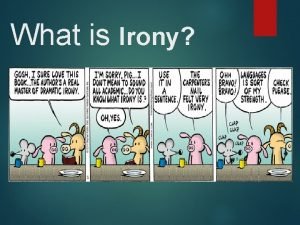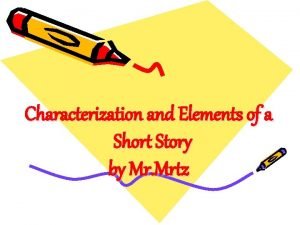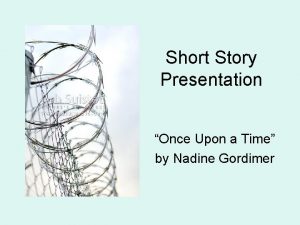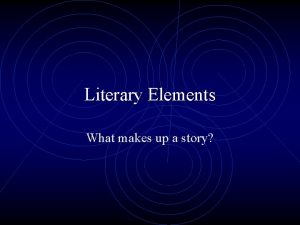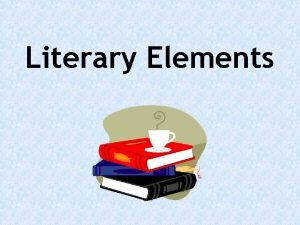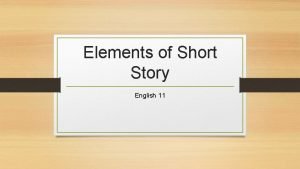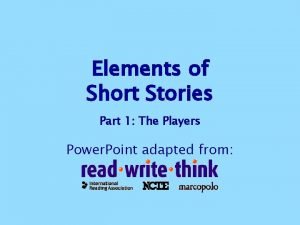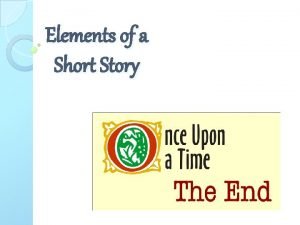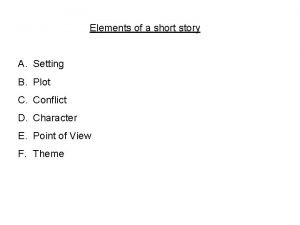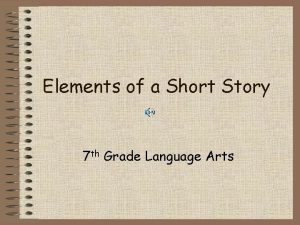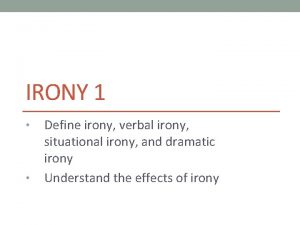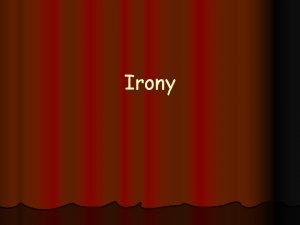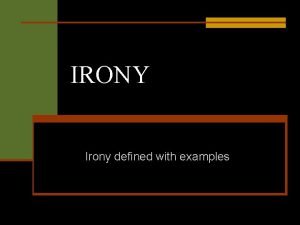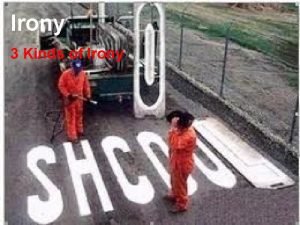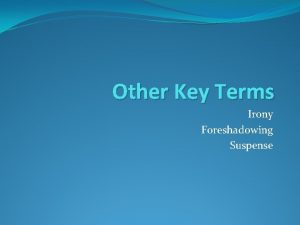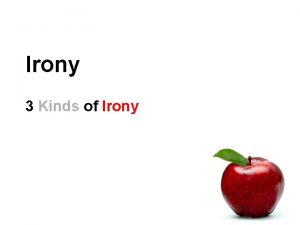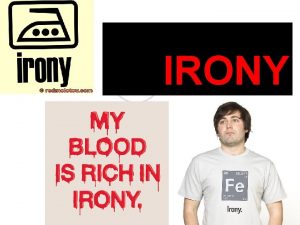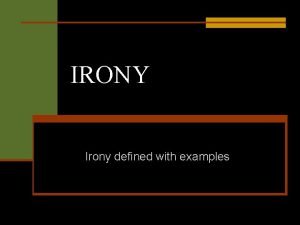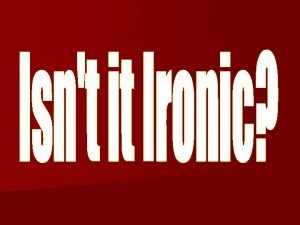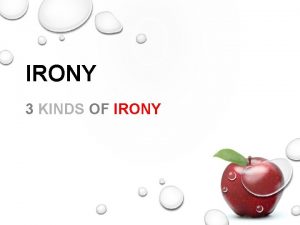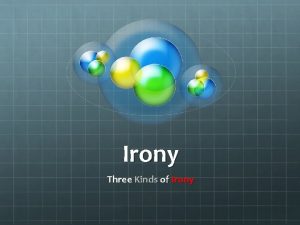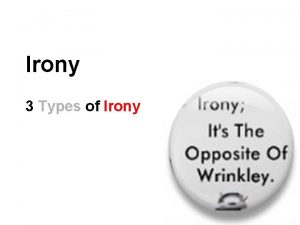Elements of the Short Story Elements Characterization Irony













- Slides: 13

Elements of the Short Story

Elements • • Characterization Irony Plot Symbolism Theme Tone Point of View Style

Characterization • Direct – the author comes right out and tells the reader what the character is like ▫ “he was a quiet man, not given to talking about himself” • Indirect – the author lets the reader draw his own conclusions about the character

Indirect Characterization 1. 2. 3. 4. 5. 6. 7. Character’s name Appearance What character says What character thinks What other people think of character How animals react to character What character does

Irony • A literary technique by which, through characterization or plot, the writer indicates something opposite to that which is stated

3 Types of Irony • Rhetorical (Verbal) – saying the opposite of what is meant • Dramatic, Tragic, Situational Irony – readers know more about situation than character • Cosmic (Fate) Irony – destiny controls one’s fate – one has little influence or significance

Plot • Refer to plot diagram

Symbolism • • • Something that stands for something else Conventional – cross=Christianity Natural – water=life May be people, objects, or an action Note – don’t confuse symbol with motif, which is a reoccurring image or object that does not stand for something else

Theme • The theme should ▫ ▫ ▫ Be specific to the story Be universal Provide unity to the story Be an integral part of the story Present new awareness of life

Tone • How the writer feels about his/her characters and plot • Could be light, romantic, sympathetic, ironic, pensive (described using adjectives)

Tone is set by: • Action – a brutal murder sets a morbid tone • Choice of details – in presenting facts • Author’s style – figurative language, diction, rhythm, sounds • A writer will use shifts in tone to shock the reader and maintain interest

Point of View • The relationship of the narrator and the story • Also called the method of narration

Style • The way in which a writer uses language • Diction – choice of words (simple vs complex) • Types of Sentences – simple, compound, complex, compound-complex, fragmented • Poetic Language – figures of speech, sound devices, rhythmical patterns, symbols • Rhetorical Devices – antithesis, apostrophe, rhetorical question
 Tall+short h
Tall+short h Situational irony vs dramatic irony
Situational irony vs dramatic irony Ano ang maikling kwento
Ano ang maikling kwento Short story characterization
Short story characterization Indirect vs direct characterization
Indirect vs direct characterization What does direct characterization mean
What does direct characterization mean Short story for presentation
Short story for presentation Elements of a short story video
Elements of a short story video Literary elements plot
Literary elements plot Short story with the 5 elements
Short story with the 5 elements Elements of a short story powerpoint
Elements of a short story powerpoint Parts of short story
Parts of short story Settings of short story
Settings of short story What are the 7 elements of a short story?
What are the 7 elements of a short story?

